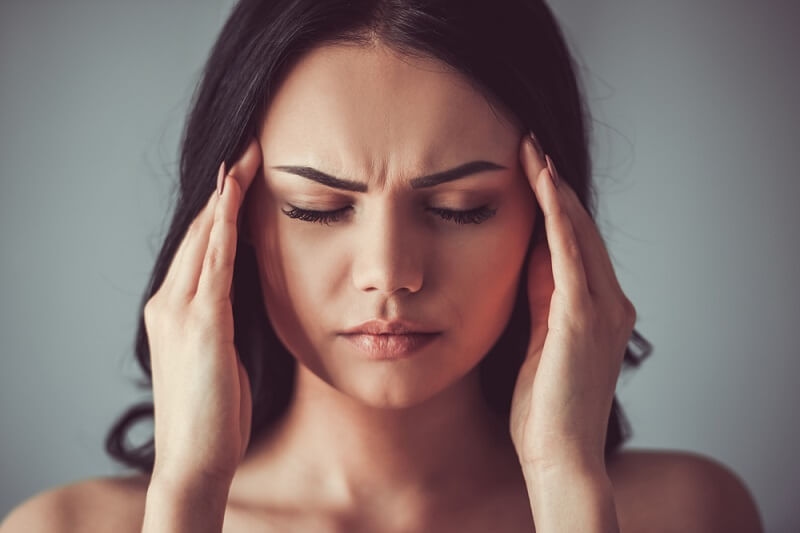Why Headaches? Unraveling Causes, Types, and Remedies

Headaches are one of the most prevalent health complaints worldwide. Nearly everyone has experienced the discomfort of a headache at some point in their lives. While they are generally not life-threatening, headaches can significantly impact one's quality of life. Let's learn about headaches, exploring their various types and, most importantly, how to manage them.
What are Headaches? Factors of their occurrence
A headache is a pain or discomfort in the head or upper neck region. The intensity and duration of headaches can vary from mild and fleeting to severe and persistent. Headaches result from a multitude of factors, and their occurrence depends on a combination of these factors, including:
- Stress is a common trigger for tension-type headaches caused by muscle tension and increased muscle contractions. Stress-related headaches are a reflection of how emotional and physical well-being are interconnected.
- Skipping meals, caffeine withdrawal, or consuming certain foods and drinks (such as alcohol) can lead to headaches. Ensuring a balanced diet and adequate hydration is essential for headache prevention.
- Exposure to strong odors, bright lights, loud noises, or weather changes can provoke headaches in some individuals. Managing your environment and minimizing potential triggers can help reduce the frequency of headaches.
- Poor sleep or changes in sleep patterns can contribute to headaches. Establishing a consistent sleep routine and addressing sleep disorders can be critical in headache management.
- Hormonal fluctuations, especially in women during menstruation, pregnancy, or menopause, can be linked to headaches. Understanding and managing these hormonal changes can help alleviate associated headaches.
Different Types of Headaches

- Tension-type Headache: These are the most common type and result from stress, muscle tension, or anxiety. They are a steady, mild to moderate band-like pain around the head. Tension-type headaches can feel like a constant tightness and are associated with tight neck and shoulder muscles.
- Migraine: Migraines are severe, throbbing headaches accompanied by nausea, vomiting, and sensitivity to light and sound. They can last hours to days and may be preceded by an "aura" of visual disturbances. Migraines can be incredibly debilitating and require specialized treatment strategies.
- Cluster Headache: Cluster headaches are excruciatingly painful headaches that occur in clusters, typically simultaneously each day. They are described as "suicide headaches" due to their intensity. These headaches usually occur in cycles, and their precise cause remains unclear.
- Medication Overuse Headache: Ironically, excessive use of pain relievers can lead to medication overuse headaches. These headaches occur when medications are taken too frequently to alleviate other headaches, creating a vicious cycle. It's important to use pain medications as directed by a healthcare provider.
- Thunderclap Headache: These sudden, severe headaches come on like thunderclaps and may signal a serious underlying condition like a ruptured blood vessel or infection. Thunderclap headaches require immediate medical attention to rule out life-threatening causes.
Learn About: Migraine or Headache: Which Is Causing Your Pain?
Causes of Headaches
Primary Headaches occur independently and are not caused by an underlying condition. Migraines, tension-type headaches, and cluster headaches fall into this category. They are considered disorders themselves rather than symptoms of another disease.
Secondary Headaches result from an underlying condition or injury, such as head trauma, infections, sinus problems, or medication overuse. Addressing the underlying cause is crucial for managing secondary headaches. Secondary headaches can serve as vital warning signs of an underlying health issue.
Diagnosis and Tests for Headaches
- MRI or CT scans: These imaging tests rule out structural abnormalities in the brain that could be causing the headaches. They can help identify tumors, bleeding, or other significant issues.
- Blood tests: Blood tests can be used to identify any underlying medical conditions, such as infections, autoimmune disorders, or hormonal imbalances, which may be contributing to the headaches.
- Lumbar puncture (spinal tap): In cases of suspicion of an infection or bleeding in the brain, a lumbar puncture may be performed to examine the cerebrospinal fluid.
Symptoms of Headaches
- Pain or pressure in the head or neck
- Nausea and vomiting
- Sensitivity to light and sound
- Visual disturbances (for migraines)
- Nasal congestion or eye redness (for cluster headaches)
Treatment for Headaches

- Over-the-counter Pain Relievers: Pain relievers like ibuprofen or acetaminophen can relieve mild headaches. However, it's essential to use these medications as directed and avoid overuse, which can lead to medication overuse headaches.
- Prescription Medications: For severe or recurrent headaches, prescription medications such as triptans (for migraines), preventive medications, or analgesics may be prescribed. Healthcare providers typically prescribe these medications, which should be used under their guidance.
- Lifestyle Changes: Managing stress, maintaining a regular sleep schedule, and staying hydrated can help prevent and alleviate headaches. Relaxation techniques such as deep breathing exercises, progressive muscle relaxation, and mindfulness meditation can be beneficial.
- Identifying Triggers: Keeping a headache diary to track potential triggers, such as certain foods, activities, or stressors, can help manage and prevent headaches. Avoiding known triggers can reduce the frequency and intensity of headaches.
- Biofeedback and Cognitive Behavioral Therapy: These approaches can help individuals learn to control bodily functions like muscle tension and heart rate, potentially reducing the frequency and intensity of tension headaches.
Alternative and Integrative Therapies for Headaches
- Acupuncture: This ancient Chinese practice involves inserting thin needles into specific points on the body to alleviate pain, including headaches. Acupuncture may help reduce the frequency and severity of certain types of headaches.
- Biofeedback: A technique that helps individuals learn to control bodily functions like muscle tension and heart rate, potentially reducing the frequency and intensity of tension headaches. Biofeedback can be particularly useful for individuals who want to avoid or minimize medication use.
- Yoga and Meditation: These practices can help reduce stress and muscle tension, contributing to fewer tension-type headaches. Regular yoga and meditation sessions may also improve overall well-being and resilience to stress.
- Herbal Remedies: Some individuals explore herbal remedies like butterbur or feverfew for migraine prevention. However, it's essential to consult a healthcare provider before using herbal supplements, as they can interact with other medications or have side effects.
Home Remedies for Headache Treatment and Management
- Hydration: Ensuring you are well-hydrated throughout the day is essential, as dehydration can trigger headaches. Aim to drink adequate water daily, and be mindful of your fluid intake.
- Relaxation Techniques: Practice deep breathing exercises, progressive muscle relaxation, or mindfulness meditation to reduce stress and tension. These techniques can be particularly effective for tension-type headaches.
- Caffeine: Sometimes, a small amount can help alleviate a headache. However, excessive caffeine intake may worsen the situation or lead to caffeine withdrawal headaches. Moderation is key.
- Cold Compress: Applying a cold compress to the forehead or neck can provide relief by constricting blood vessels and reducing inflammation. This can be especially helpful for tension-type headaches.
- Aromatherapy: Some people relieve headaches by inhaling essential oils like lavender, peppermint, or eucalyptus. You can use a diffuser or add a few drops of essential oil to a bowl of hot water and inhale the steam.
Conclusion
Headaches are a common and disruptive part of life, but understanding their causes, types, and treatment options can help you manage them more effectively. Whether you opt for conventional treatments, alternative therapies, or home remedies, finding the right approach for you can lead to fewer headaches and improved overall well-being.
This content was created by AI
-1717753922-r.jpg)